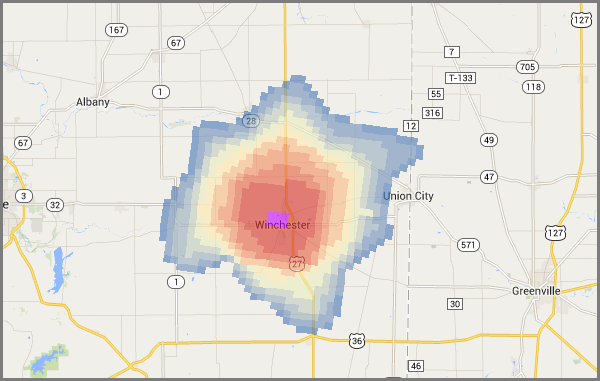Modeling Air Releases in RSEI
- RSEI Data and Modeling
- RSEI and TRI Emissions Data
- Modeling Air Releases
- Modeling Water Releases
- RSEI and NATA
- RSEI Grid and Locational Information
EPA's Risk-Screening Environmental Indicators (RSEI) model calculates results for the following kinds of air releases reported to the Toxics Release Inventory:
- Stack air releases from reporting facilities. Stack (or point) air releases include releases to air through stacks, confined vents, ducts, pipes, or other confined air streams, and represent the majority of air releases.
- Fugitive air releases from reporting facilities. Fugitive air releases include leaks, evaporation from surface impoundments, and releases from building ventilation systems.
- Transfers to off-site incineration. Releases are modeled as stack air releases, after estimating the portion of each chemical destroyed during incineration.
- Transfers to wastewater treatment plants (Publicly Owned Treatment Works, or POTWs). Some portion of the chemical transferred volatilizes during the treatment process (e.g., from a settling pond).
RSEI calculates air concentrations resulting from chemical releases using an EPA dispersion model called AERMOD. AERMOD is also used by EPA’s National Air Toxics Assessment (NATA). Learn more about the difference between RSEI and NATA.
 RSEI uses the following data to model air releases:
RSEI uses the following data to model air releases:
- Weather data from the weather station nearest to the releasing facility.
- Facility-specific stack parameters (height, diameter and exit gas velocity) where possible. Otherwise, RSEI uses industry medians or an overall default value.
- Chemical-specific air decay rate.
- Chemical-specific destruction and removal efficiency for off-site incinerators.
- U.S. decennial Census data.
- Age- and sex-specific body weights and inhalation rates.
RSEI does not include specific data on the following components related to air modeling:
- How the release rate of the chemical varies over time (RSEI assumes a constant rate of release).
- Where people spend their day when not at home (RSEI assumes people are exposed continuously at their place of residence).
- What chemicals are produced from decay or transformation of modeled chemicals (RSEI only models the chemical released).
RSEI estimates a concentration for each 810-meter grid cell around the facility for 49 kilometers. For each grid cell, RSEI calculates the following metrics:
- Population (number of people in grid cell).
- Chemical concentration.
- Toxicity-weighted concentration (toxicity weight x concentration), provided in the RSEI Geographic Microdata.
- Surrogate dose. Human exposure assumptions (body weight and inhalation rate) are used to transform the concentration into an estimated dose for each grid cell.
- RSEI Score (dose x toxicity weight x population).
Section 5 of the RSEI methodology document provides detailed information on how RSEI models air releases.
